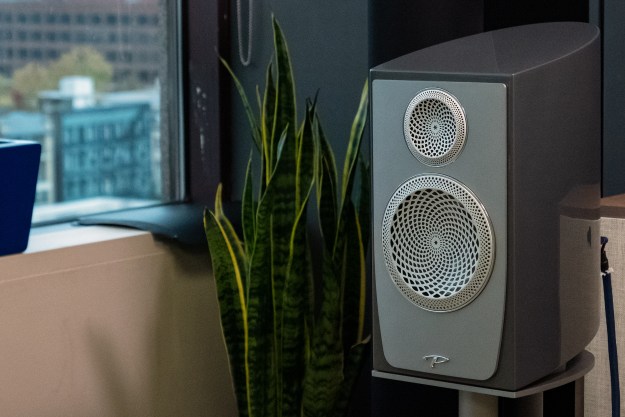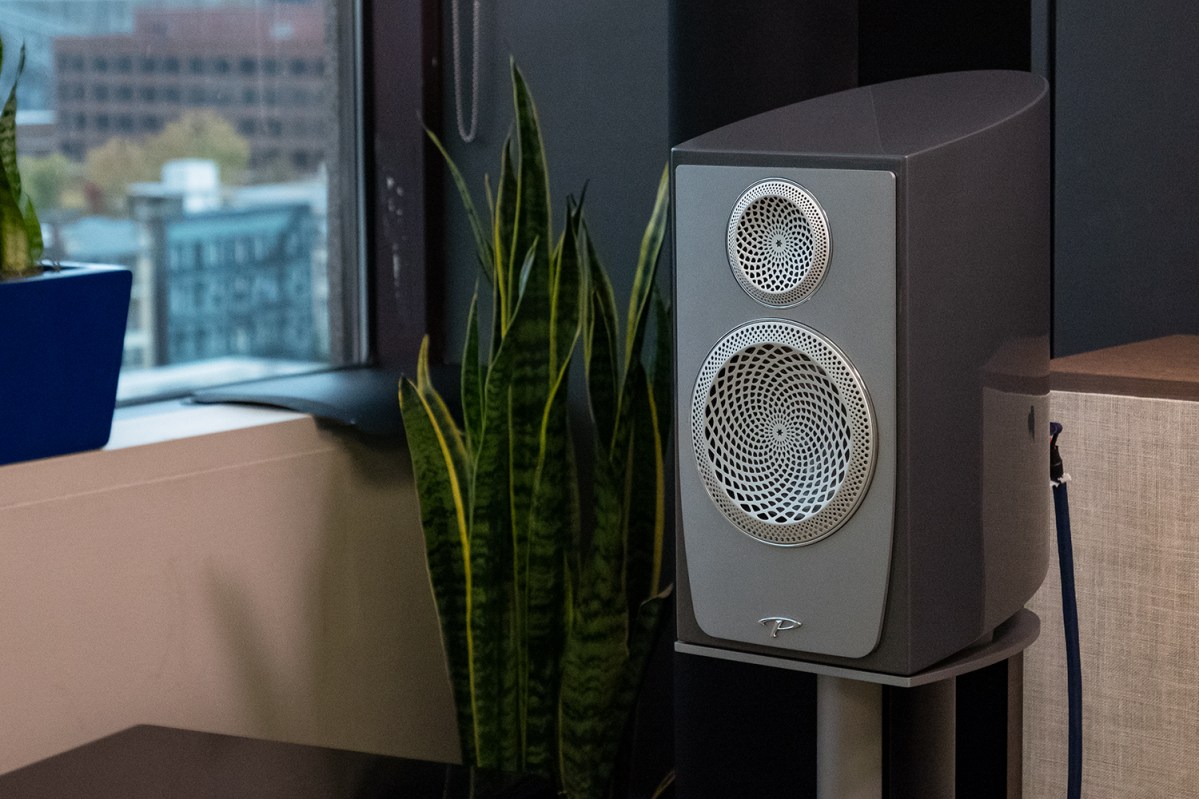
“Paradigm’s astonishing Persona B speakers let you sit in with your favorite musicians.”
- Gorgeous design
- Vivid, lifelike sound
- Insane stereo image
- Great for smaller rooms
- High performance comes at a luxury price
Just like you can get a Corvette that stalks the heels of the latest Ferarri, you can approach the awe-inspiring transparency offered by Paradigm’s $7,000-per-pair Persona B bookshelf speakers at a considerably lower price.
But be they supercars or massive 8K TVs, once you reach into the stratosphere of quality in cutting-edge tech, you’re paying for more than a product with very nice components. You’re buying experiences that transcend logical value.
After months of listening to Paradigm’s newest musical spaceships, we’d be lying if we didn’t say that we now share an odd kinship with Ferrari owners. With a sprawling stereo image, pristine audio clarity and detail, all combined with the delicate balance of a world-class rock climber, the Persona B are easily the best bookshelf speakers this reviewer has ever heard.
At Digital Trends, we’re staunch believers in the perfect match between price and performance. But even we have to admit that sometimes you actually can put a high price on unadulterated musical happiness. In this case, that price is seven grand.
What you pay for
A little over a decade passed between the release of Paradigm’s previous flagship Signature Series speakers and the new Persona lineup, and though the speakers took a massive leap in price between models (the Signature listed for between $1,900 and $6,000 per pair, the Personas run between $7,000 and $35,000) the company also added significant technological improvements.
First and foremost, every Persona model — from the bookshelf Persona B model we tested to the top-of-the-line Persona 9H floorstanders — feature beryllium diaphragms. With rigidity that’s three times higher than titanium and yet a density that’s two and a half times lower, beryllium has the ability to provide speaker drivers with an astonishing frequency response (36Hz-45kHz). That translates into the incredible sound, especially in the higher registers.
Alongside improvements in audio tech, the company also put considerable attention into the design of the enclosures. It’s clear as soon as you look at them that no expense was spared. At 30 lbs per unit, the fin-like Persona B are about as robust as they come, with gorgeous swirling grills that cover each driver and four carbon fiber-coated terminals (for optional bi-amping or bi-wiring) on the back.
Even in their stance on top of Paradigm’s robust speaker stands, the curvy, spaceship-like Persona B speakers reach out to you. They’ve got a heavy, angled metal base and an equally angled top that makes them look as though they’re leaning in to gently whisper musical secrets.
Astonishing sound
The Persona B look amazing, but they sound utterly magical. That is to say: When you press play, they disappear.
Instead of hearing directional sound from the speakers themselves, you’ll hear every minute detail of the music in a collage of vivid, room-filling colors. Every tiny finger pluck, every breath, every itty-bitty musical element, they’re all right in front of you and seemingly tangible, as though your favorite band is playing that perfect take right in your listening room.
Easily the best bookshelf speakers we’ve ever heard.
We’re used to great-sounding bookshelf speakers creating a sort of diorama of our favorite bands, reproducing them on an imaginary miniature stage between the speakers, but the Persona B have such a wide stereo image and such fluid balance across low and high frequencies, everything sounds full size and lifelike.
This effect is most astonishing when listening to live recordings. Ahmad Jamal’s At The Pershing feels like we’re eating dinner in a mid-century jazz club. Peter Frampton’s classic album Frampton Comes Alive sounds like we’re at the damn arena.
Live recordings are epic, but the Persona B sound incredible whatever you feed them. Trust us, we tried everything. We listened to the Persona B speakers through an Anthem STR integrated amp, via everything from high-end devices like an Astell & Kern portable player and an EAT B-Sharp turntable to a lowbrow cell phone streaming Spotify. Surprise, surprise: They sounded amazing in all cases.
The perfect small room speaker?
If the Persona B taught us anything, it’s that the vast majority of listeners — high-end or otherwise — don’t actually need massive floorstanding speakers to get vivid, lifelike sound.
The fact is, most of us don’t have spacious, perfectly treated rooms that can handle huge models like the Persona 9H or GoldenEar’s Triton Reference. Instead, looking at the latest generation of high-end bookshelf models makes a lot more sense for the majority of listeners. That’s especially true since the latest options from companies like KEF, Paradigm, and others can easily fill a small to medium-sized room with sound, without involving the placement issues of bigger models.

So, what about the Persona B’s exorbitantly high sticker price? Well, as far as we’re concerned, for those with a lot of padding in their bank accounts, it’s worth it — as long as you plan on enjoying them to the fullest. After all, many people buy that high-end supercar or big new TV to impress friends and neighbors. But it’s the ones who buy it for the love of the experience that will get their money’s worth.
If we had the cash, we’d be snagging a pair of Persona B speakers, even if we were the only ones who ever got to hear them.







